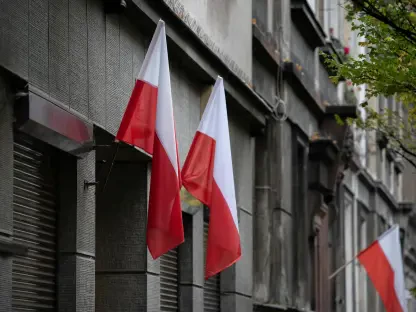In a quiet town like Leominster, Herefordshire, a routine day of waste collection turned into a devastating loss on November 11, when Andzie “Stan” Stanik, a 62-year-old refuse collector, lost his life in a bin lorry crash. The incident, involving a collision with an empty building, also hospitalized the driver and another passenger, sending shockwaves through the tight-knit team at FCC Environment and the broader community. Workplace tragedies like this strike at the heart of organizations, leaving employees grappling with grief and uncertainty. How can HR professionals step in to guide their workforce through such profound sorrow? This question demands urgent exploration as the human cost of workplace incidents becomes all too real.
The Hidden Toll of Workplace Loss
Beyond the immediate tragedy of a life lost, workplace fatalities cast long shadows over organizations. The emotional toll on colleagues can manifest as grief, anxiety, or even guilt, particularly in high-risk industries like waste management where physical dangers are a daily reality. Studies from workplace safety organizations reveal that unaddressed trauma can lead to a 40% increase in absenteeism and a significant drop in morale. HR’s responsibility extends far beyond policy enforcement; it encompasses nurturing the emotional well-being of employees during the darkest times. Addressing this hidden toll is not just compassionate—it’s essential for organizational stability.
The impact of such events often ripples outward, affecting not only direct colleagues but also families and the wider community. Public responses, like the heartfelt condolences issued by Herefordshire Council following Stanik’s passing, demonstrate the importance of acknowledging loss openly. This act of recognition can validate employees’ feelings and set a tone of empathy. HR must seize this moment to build trust, ensuring that the workforce feels supported rather than isolated in their pain.
Peeling Back the Layers of Grief
Supporting employees after a tragedy requires a nuanced understanding of grief’s many phases. In the immediate aftermath, shock and disbelief often dominate, necessitating clear, honest communication to prevent rumors from spreading. HR must act swiftly to provide factual updates while offering spaces for emotional expression. This initial response lays the groundwork for healing, ensuring employees don’t feel silenced or overlooked during their most vulnerable moments.
As days turn into weeks, the focus shifts to sustaining support through resources like counseling and flexible work options. Mid-term recovery might involve adjusting workloads or providing time off without bureaucratic obstacles. Data from mental health studies indicates that access to professional support within the first month of a traumatic event can reduce the risk of long-term psychological issues by up to 30%. Tailoring responses to individual needs during this phase helps employees process their loss at their own pace.
Over the long haul, rebuilding a sense of normalcy and trust within the team becomes paramount. HR can facilitate this by fostering resilience through team-building initiatives or memorial activities that honor the lost colleague. The goal is to create an environment where grief is acknowledged as part of the collective experience, not a burden to be hidden. This long-term commitment to emotional safety can transform tragedy into a catalyst for stronger workplace bonds.
Voices of Wisdom in Times of Crisis
Expert insights shed light on how HR can lead with compassion during unimaginable loss. Jeanette Cook, a principal well-being consultant at Aon, emphasizes the need for immediate action: “Notify senior management right away, designate a trained liaison for the family, and ensure transparent communication with staff while linking them to support services.” Her advice underscores the importance of structure in the chaos of grief, providing a roadmap for HR to follow.
Sonia Moore, CEO of Sytuate, offers a broader cultural perspective, stating, “An organization’s true character emerges in how it handles crisis, not just in its written policies.” This viewpoint highlights that empathy must be visible and actionable, shaping how employees perceive their workplace’s values. Moore’s words remind HR leaders that every gesture of support contributes to a legacy of care.
Adding to this, Glenn Mason from Onebright advocates for trauma-informed leadership, noting, “A psychologically safe space where employees can voice their distress without fear is non-negotiable.” His focus on emotional safety points to the need for managers to be equipped with skills to handle sensitive conversations. Together, these expert voices form a powerful consensus: compassion must be the cornerstone of HR’s response to tragedy.
Turning Empathy into Action
HR can translate compassion into tangible support by implementing a robust crisis response plan. Start with transparent communication—inform employees about the incident without speculation, ensuring clarity and trust from the outset. Immediate access to employee assistance programs and professional counseling can address urgent emotional needs. These steps create a safety net for those struggling to cope in the wake of loss.
Practical measures also play a critical role in healing. Offering flexible working hours, quiet spaces for reflection, or temporarily adjusted duties allows employees to regain a sense of control, as Mason suggests. Additionally, HR can organize peer support groups, facilitated by trained professionals, to foster a shared space for processing grief. Training managers to spot signs of distress, such as withdrawal or frustration, ensures that no one slips through the cracks during recovery.
Long-term, embedding empathy into organizational culture is vital. Policies should support compassionate leave without red tape, and regular check-ins can help gauge employee well-being over time. Committing to these practices ensures that support isn’t merely a reaction to crisis but a fundamental value. By taking these steps, HR can guide employees from the depths of grief toward a renewed sense of purpose and connection.
Reflecting on a Path Forward
Looking back, the tragic loss of Andzie “Stan” Stanik served as a poignant reminder of the fragility of life in even the most routine jobs. The incident in Leominster revealed the profound impact workplace tragedies have on entire teams, exposing the urgent need for HR to step up with compassion and structure. Each expert insight and practical strategy discussed underscored a shared truth: supporting employees through grief demanded more than policies—it required heart.
Moving forward, organizations must prioritize building frameworks that anticipate and address trauma with empathy. HR professionals are encouraged to advocate for mental health resources, train leaders in trauma-informed practices, and foster cultures where vulnerability is met with understanding. By committing to these actions, workplaces can honor those lost by ensuring their legacy inspires lasting change in how grief is navigated.









